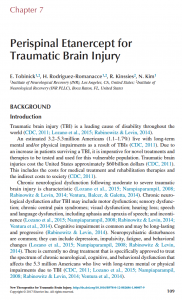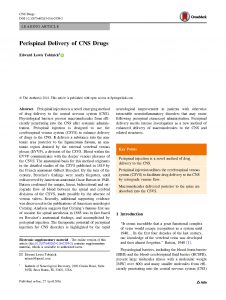Perispinal etanercept treatment by Dr. Tobinick 4 1/2 years after stroke. Immediate and sustained relief of constant, daily, debilitating central post-stroke pain that had lasted more than 4 1/2 years. The central stroke pain had followed a thalamic stroke in 2018, and had been present 24/7 and failed to adequately respond to all previous drug treatment (Thalamic Pain Syndrome). Filmed October 6, 2022, at the Institute of Neurological Recovery (INR®) in Boca Raton, Florida.
Disclaimer: Individual results vary, not all patients respond. Additional doses may be necessary to maintain the clinical response. Treatment is innovative (“off-label”). Terms of Use



 May 2, 2016 (Los Angeles, Boca Raton): On April 27, 2016, the peer-reviewed review article entitled, Perispinal Delivery of CNS Drugs, by Edward Tobinick MD, published online in the scientific journal CNS Drugs. The article published in print in the June issue of the journal. The abstract of the article states:
May 2, 2016 (Los Angeles, Boca Raton): On April 27, 2016, the peer-reviewed review article entitled, Perispinal Delivery of CNS Drugs, by Edward Tobinick MD, published online in the scientific journal CNS Drugs. The article published in print in the June issue of the journal. The abstract of the article states: